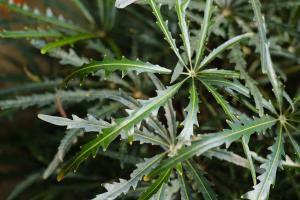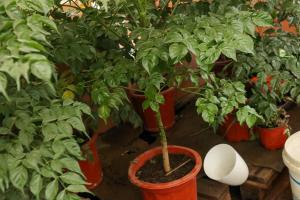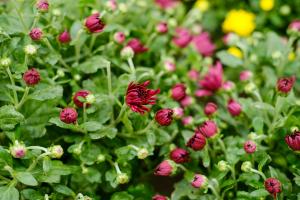What Causes Spots on Tomato Plant Leaves?
Tomatoes are a popular fruit that many gardeners enjoy growing, but spotting on tomato plant leaves can be a frustrating and worrying issue. Brown or yellow spots on tomato leaves can indicate a problem with the plant, and it can be dangerous if left untended. In this article, we will discuss the different causes of spots on tomato plant leaves and how to prevent them.
1. Fungal Diseases
Fungal diseases are the most common cause of spots on tomato plant leaves. Some common fungal diseases that affect tomato plants are Septoria leaf spot, early blight, and late blight. Septoria leaf spot causes small, dark brown spots that can merge into large blotches. Early blight starts as small, circular spots that become yellow and then brown, while late blight causes irregularly shaped spots with a green border and a gray-brown center. These fungal diseases spread rapidly and can lead to the death of the plant if not treated early.
2. Bacterial Diseases
Bacterial diseases can also cause spots on tomato plant leaves. One common bacterial disease is bacterial spot, which causes small, circular lesions with a water-soaked appearance. These spots gradually turn brown and can cause the leaves to curl and die. Bacterial diseases can be difficult to control, and it is important to remove any infected plants to prevent the further spread of the disease.
3. Viral Diseases
Several viral diseases can cause spotting on tomato plant leaves, including tomato yellow leaf curl virus, tomato mosaic virus, and cucumber mosaic virus. These viruses are transmitted by insect vectors such as whiteflies or thrips and can cause yellow or green mottling on the leaves, as well as stunted growth and poor fruit quality. Unfortunately, there is no cure for viral diseases, and infected plants should be removed and destroyed to prevent the spread of the virus to other healthy plants.
4. Nutrient Deficiencies
Tomato plants require certain nutrients to grow healthy and strong, and a deficiency of these nutrients can cause spotting on the leaves. For example, a deficiency of calcium can cause blossom end rot, which appears as brown, water-soaked spots on the bottom of the fruit. A deficiency of magnesium can cause yellowing between the veins of the leaves, while a deficiency of iron can cause chlorosis or yellowing of the leaves. It is important to ensure that tomato plants receive adequate nutrition to prevent nutrient deficiencies.
5. Environmental Factors
Environmental factors such as high humidity, high temperatures, and excessive moisture can also cause spotting on tomato plant leaves. When the weather is hot and humid, fungal diseases can proliferate and cause spots on the leaves. Overwatering and crowding of plants can also create conditions that encourage the growth of fungal diseases. It is important to maintain proper plant spacing and to water plants early in the day to prevent excessive moisture on the leaves.
Prevention and Treatment
Preventing spotting on tomato plant leaves requires a combination of good gardening practices and timely treatment. Some effective prevention measures include crop rotation, using disease-resistant varieties of tomatoes, maintaining proper plant spacing, and keeping the garden clean and weed-free. Treatment options include fungicides, bactericides, and pesticides, but it is important to choose the appropriate product and to follow the instructions carefully to avoid damage to the plants and surrounding environment.
Conclusion
Spotting on tomato plant leaves can be a frustrating problem for gardeners, but with proper prevention and treatment, it is possible to maintain healthy tomato plants and enjoy a bountiful harvest. By understanding the different causes of spotting on tomato plant leaves and taking proactive measures to prevent and treat the problem, gardeners can ensure that their tomato plants stay healthy and productive.

 how many times do yo...
how many times do yo... how many planted tre...
how many planted tre... how many pine trees ...
how many pine trees ... how many pecan trees...
how many pecan trees... how many plants comp...
how many plants comp... how many plants can ...
how many plants can ... how many plants and ...
how many plants and ... how many pepper plan...
how many pepper plan...































